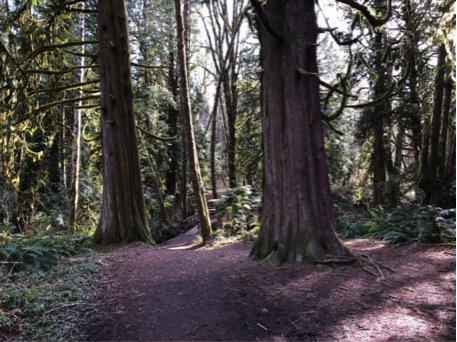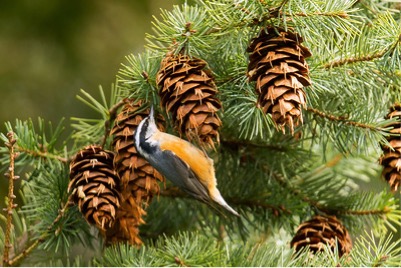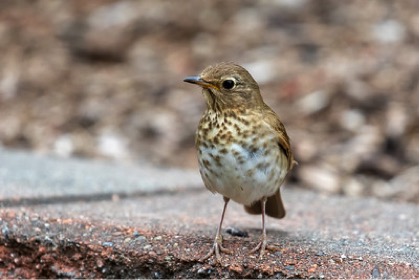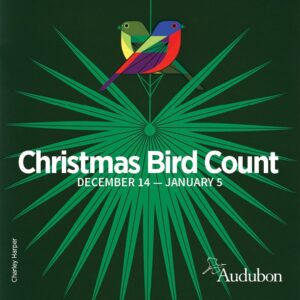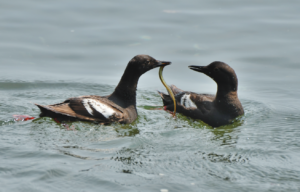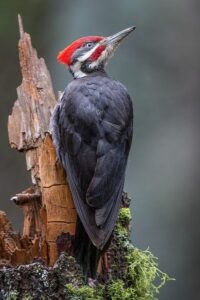Bob Wadsworth – March 2021
Map: TESC Beach Trail; eBird: Geoduck Beach
Introduction
The Evergreen Beach Trail is a pleasant walk through a mature forest of cedar, Douglas fir and the usual northwest tree species. It’s a mile long one way and leads from the Evergreen College F-lot to the shore of Eld Inlet. The trail offers upland songbirds and waterfowl along the shore.
Getting to the trail
Make your way to the Evergreen F-Lot off of Driftwood Road on the college campus and park at the far end of the lot. During the COVID-19 campus closedown parking is free. It was $2 when the campus was open. Find the start to the E1 trail which is also called the Beach Trail. You will see brown posts labeled E1-01, E1-02 etc. as you make your way downhill to the beach. The trail is generally downhill on the way to the beach and uphill on the way back – nothing too steep but you’ll know you are headed down or up. Also, the trail can be muddy though nothing you can’t walk around. About half way down you cross a nice creek on a nice bridge over the rushing creek below.
Walking the trail
The trail traverses an open forest with large cedars and Doug-firs. You can see through the forest as undergrowth is sparce. There are numerous trail branches which can get confusing. If you take any of these, walking downhill should get you to the beach and uphill back to the campus. If you want to keep to the straight and narrow, follow the E1 trail. This trail is not appropriate for mobility-challenged individuals.
The birds
You can see birds of the forest and birds of the shore. The link below to eBird lists birds seen in the area. To get a sense of likely birds on the date you are there, check those birds listed around that date. As the spring progresses, summer migrant forest birds will start to appear, winter migrant forest birds will disappear and aquatic birds will disappear. Winter forest migrants include kinglets, Fox Sparrow, Golden-crown Sparrows, and Varied Thrush. Winter aquatics include Buffleheads, goldeneye, scoters, scaup, and others. Summer migrants include Rufous Hummingbirds, Swainson’s Thrush, swallows, flycatchers, western tanager, black headed grosbeak, vireos, warblers, and others.
BEFORE YOU GO:
Before heading off for a birding adventure, here are some things to consider –
1. It’s always best to have a partner with you – both to maximize the joy and to minimize the risks. BHAS cannot ensure that these locations are totally safe.
2. Don’t forget to bring your mask and hand sanitizer. Have your mask handy and put it on when passing another person not in your party.
3. Leave valuables at home.
4. Check the weather and the bird reports before heading out. An easy way to check what birds have been seen is through Birder’s Dashboard http://birdingwashington.info/dashboard/. It is a simple way to research a species, place, or checklist.


